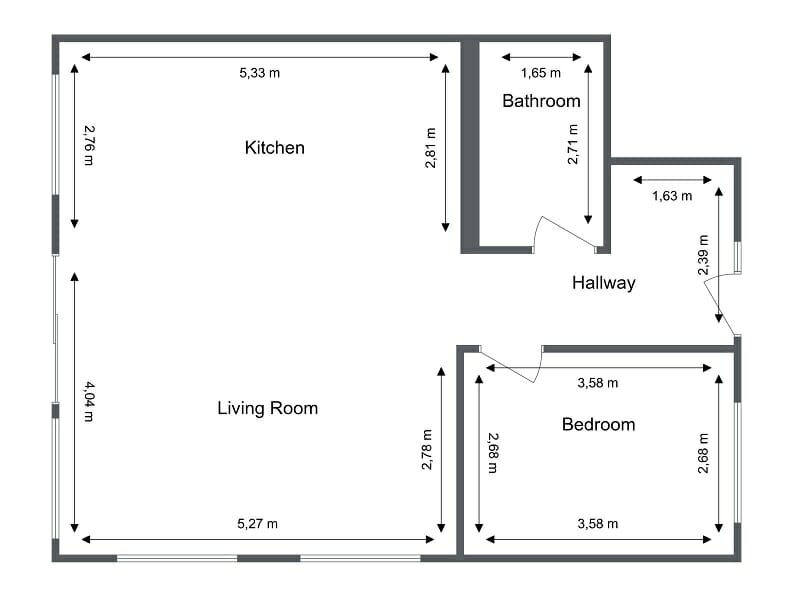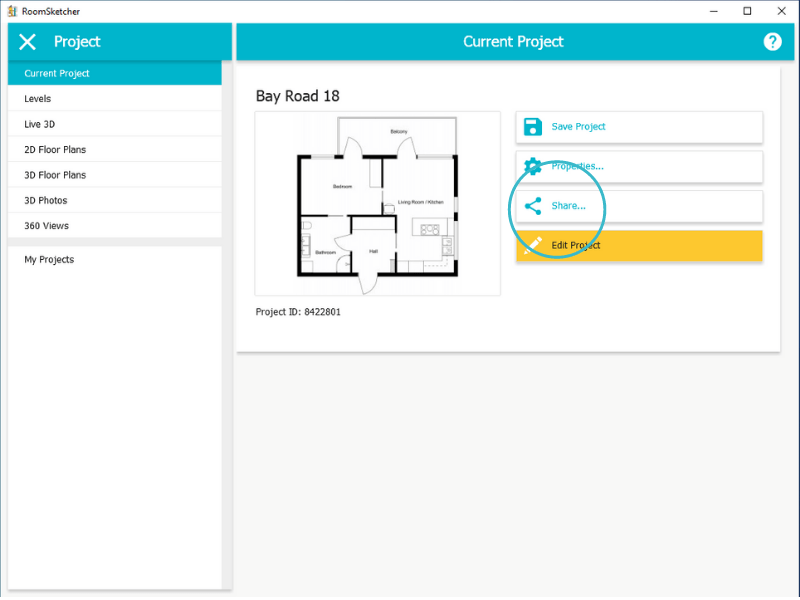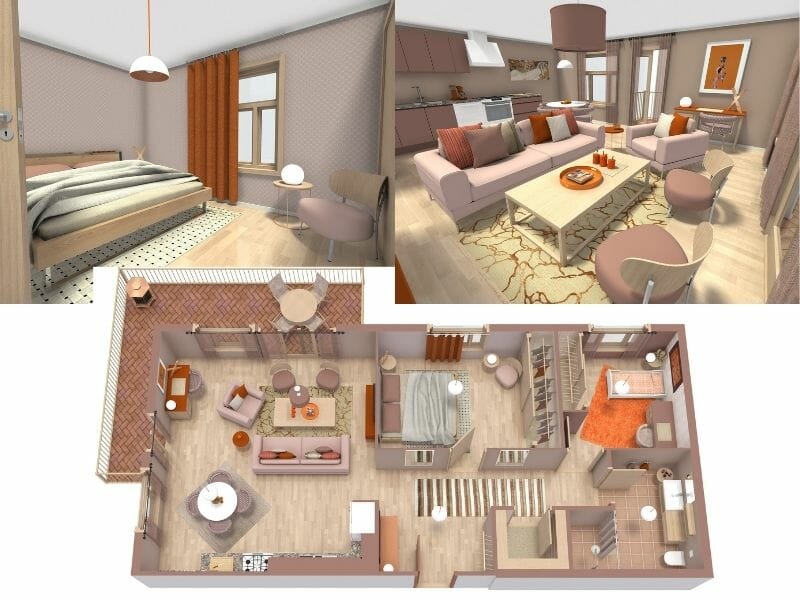Interior Design Sketches vs. Computer Software
Throughout the history of interior design, visualization tools have been crucial in bringing innovative concepts to life. These tools have evolved from ancient designs on stone tablets to detailed paper sketches in the Renaissance and modern digital simulations.

In today's digital age, the design community is debating two approaches: the classic method of traditional interior design sketches and the advanced capabilities of modern computer software. This article explores the benefits and challenges of each approach in the changing world of interior design.
The Importance of Visualization in Interior Design
In interior design, visualization is crucial for turning a designer's ideas into reality. Throughout history, visualization tools have played a vital role in transforming abstract ideas into tangible concepts, enabling designers and clients to visualize the outcome, make necessary modifications, and achieve a design that reflects the intended aesthetic and functionality.

Traditional Interior Design Sketching: The Art of Hand Drawing
Traditional hand sketching in interior design has its benefits:
- It adds a personal touch to the designs, showing the designer's unique approach.
- Using pencil and paper fosters quick and intuitive creativity.
- Using a pencil on paper helps designers quickly jot down creative ideas.
- When you design without using any intermediary software, the direct connection between your hand and brain can result in unique and personalized designs.
- Hand sketching is still technology-friendly, as drawing tablets and programs have made it accessible and sharable.

However, there are also drawbacks to consider:
- Hand sketching is often more time-intensive, especially when revisions are necessary.
- Its accuracy can be challenged, particularly when exact measurements or scales are essential.
- Traditional sketches cannot provide 3D visualizations or animations, which limits the depth and dynamism of design presentations compared to modern digital tools.

Interior Design Sketching on a Graphic Tablet
Today, many interior designers no longer use only pen and paper. They often combine it with a graphic tablet such as a Wacom tablet or an iPad with an Apple pen. Adobe Illustrator and Procreate are popular illustration programs. These help the designers visualize in other ways, such as:
- Editing the sketch easily by erasing unwanted parts or editing a layer.
- Using brushes with effects such as watercolor.
- Quickly visualize an idea in an app and save it on the device or cloud storage.
- Easily share the digital image file with clients and others.
You should remember, however, that general drawing software may have limitations, like the inability to create 3D renderings and fully visualize the space. It's best to view designs from different perspectives, including 2D sketches, 3D renderings, or even better, Live 3D representations.

Computer Software: The Dawn of Digital Design
The emergence of digital technology led to a significant transformation in the visualization methods of interior design. Computer software introduced numerous advantages that revolutionized the design process, which has made it easier to create professional drawings online and offline.
Some advantages are:
- The unparalleled precision and consistency offered by digital tools.
- Home design software ensures precise accuracy to the finest detail, unlike manual sketches.
- Advanced 3D visualization allows designers to create interactive tours and include virtual reality, giving clients a very realistic view of the proposed design.
- It facilitates smoother collaboration and sharing, allowing multiple stakeholders to view, comment on, or modify designs in real-time.
- Any changes or iterations can be implemented swiftly, eliminating the need to redraw entire layouts.

However, as beneficial as computer software can be, it's not without its challenges.
- Many programs come with a steep learning curve, demanding time, and often formal training to master.
- Technical glitches, software updates, and compatibility issues can occasionally disrupt the design process.
- Computer software can create accurate visuals, but there's a concern about losing the personal touch and intuition of traditional sketching, which could lead to standardized designs missing unique flair.
We at RoomSketcher take these challenges seriously. Our professional users get free 1-on-1 training, so you'll be a RoomSketcher master in no time!

Blending the Two: Finding a Middle Ground
Designers today often combine traditional sketching with digital tools for a balanced design approach. Hand sketches and digital design are seamlessly integrated into their workflow. Rather than viewing them as competing methods, hand sketches and digital design are integrated into a holistic workflow.
Once a rough concept is developed, digital tools can be used to refine and enhance hand-drawn designs. This integration offers clients the benefit of both worlds: the authenticity of hand sketches and the precision of digital designs, catering to diverse project needs and client preferences.
Need help getting started? Read How to Design a House: From Sketch to Reality.

The Future of Interior Design Visualization
The field of interior design visualization is rapidly evolving with new technologies like augmented reality (AR) and virtual reality (VR). AR shows digital designs in real-world settings so clients can see how proposed furnishings would look in their actual spaces. VR creates immersive environments, allowing users to experience design concepts firsthand.
AI-powered design tools are also on the rise, suggesting layouts, color palettes, and furnishings based on user preferences. However, the human touch in design remains irreplaceable.
The future of interior design depends on the designer's unique perspective, which ensures that every space tells a distinct story, regardless of the tools used.

Turn Your Interior Design Sketches into 3D
While traditional sketching harks back to its roots, celebrating design's raw, intuitive essence, digital tools optimize precision, efficiency, and immersive experiences. Together, they encompass the full spectrum of design's potential, catering to every stage, from conception to realization.
For those looking to combine the best of both worlds, the RoomSketcher App is a valuable addition to any designer's toolkit. As we navigate the ever-changing world of interior design, it's not about choosing one over the other but rather about appreciating the unique strengths that each brings to the table. Embrace the combination and let your designs stand out with unmatched distinction.
Don't forget to share this post!
Recommended Reads

Secrets to a Successful Interior Design Installation Day
Make your interior design installations more efficient using RoomSketcher online 3D home design software.

Interior Design Presentations: The Secret to Winning More Clients
Create professional 3D interior design images and interactive project presentations online- quickly, easily and affordably using the RoomSketcher App!

The Ultimate Guide to Interior Design Product Sourcing
Take your interior design product sourcing to the next level with RoomSketcher 3D Home Design Software.
